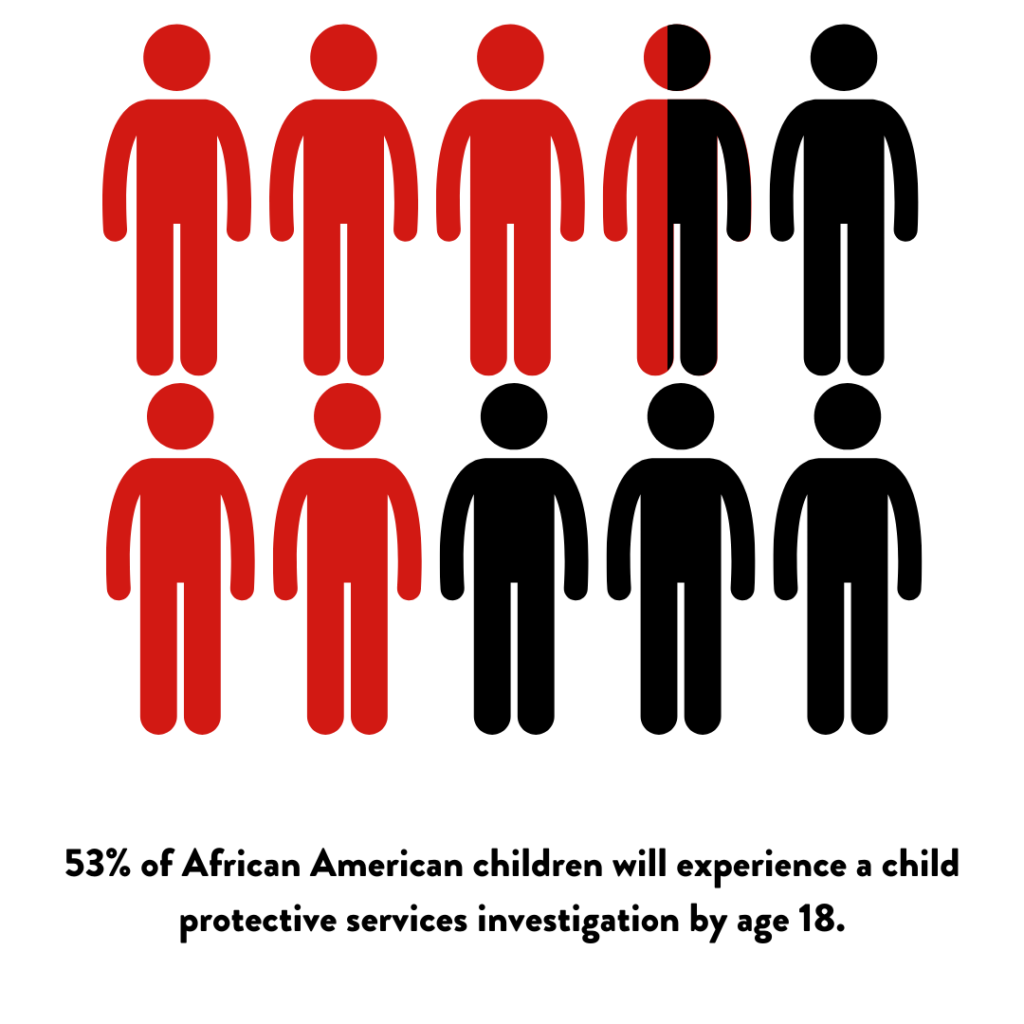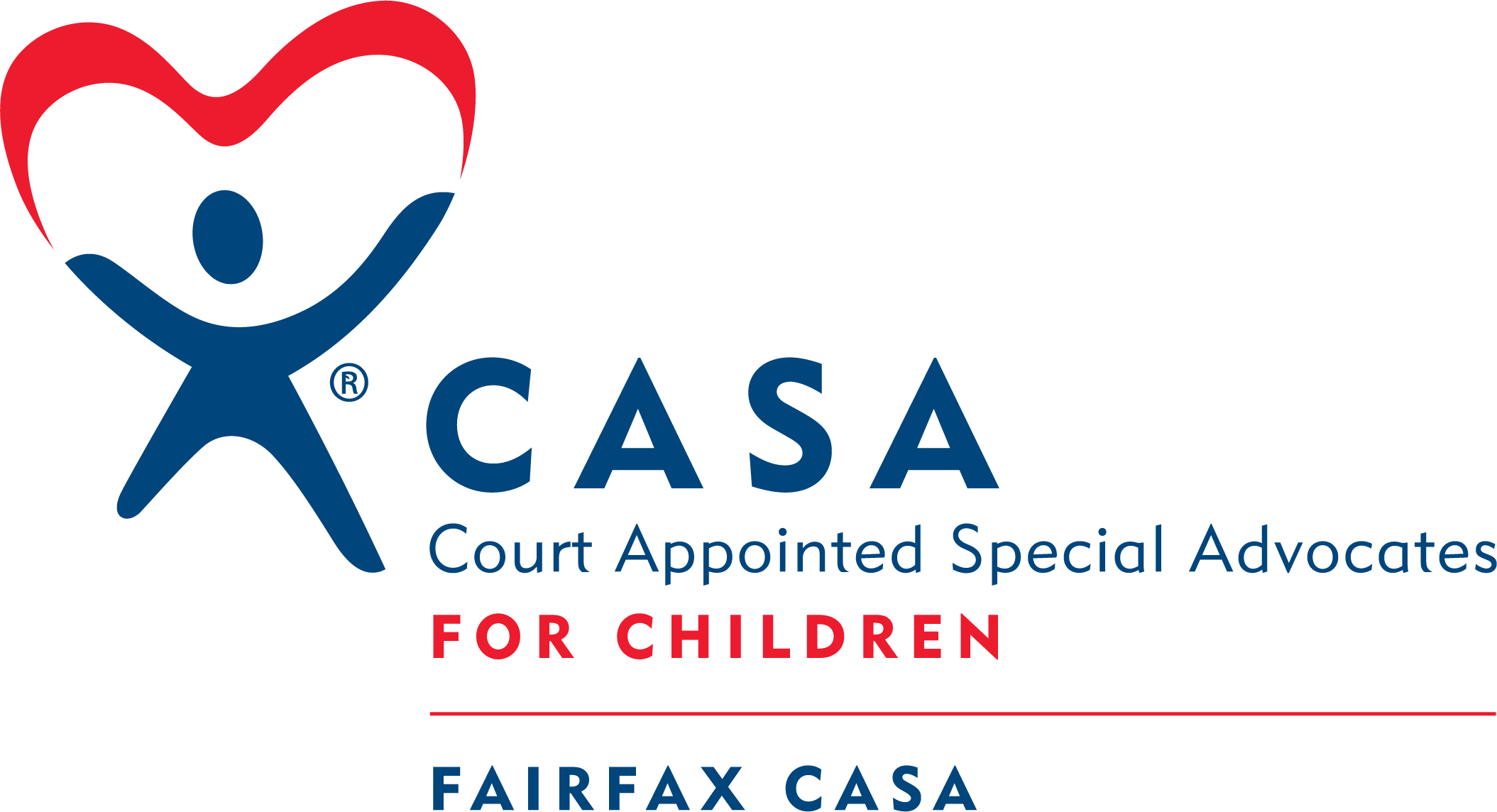Disproportionality in the Child Welfare System

Of the children served by Fairfax CASA in the past three years, 35.6% identified as Hispanic/Latino, 33.8% identified as Black/African American, and 18.8% identified as White. According to the Fairfax County Government, 50% of the county’s population identify as White, 16.3% identify as Hispanic/Latino, and 9.5% identify as Black/African American. Why is the demographic makeup of children in the Fairfax County child welfare system so different than that of the general population in the county? This disproportionality is not isolated to Northern Virginia, a significant amount of research documents the overrepresentation of Black children in the child welfare system.
Every day in the United States, a jarring number of Black families will be investigated for child abuse and neglect allegations. In fact, it’s estimated that 53% of African American children will experience a child protective services investigation by age 18. Not only are Black families being investigated more often than their White counterparts, but Black children are nearly twice as likely to be separated from their families. There is no evidence that abuse occurs at a higher rate in Black families. Many factors lend themselves to the racial disproportionality in child welfare, including the following:
- Disproportionate and disparate needs of children of diverse racial and ethnic backgrounds, particularly due to higher rates of poverty.
- Racial bias and discrimination exhibited by individuals (e.g., caseworkers, mandated reporters)
- Child welfare system factors (e.g., lack of resources for families of diverse racial and ethnic backgrounds, caseworker characteristics)
- Policy and legislation (e.g., lack of measures targeting the needs of children of diverse racial and ethnic backgrounds)
- Structural racism (e.g., historical policies and cultural dynamics)
- The number one source of referrals to CPS is schools. Approximately 7% of America’s teachers are Black, and approximately 79% are white, meaning that the number one source of referrals is coming from an overwhelmingly white source.
Once in the child welfare system, Black children stay in foster care longer, experience more placements, receive fewer services, and face a lower chance of reunification with their families. This goes on to affect the children in their future, as research suggests that children who spend a longer time in foster care are at a greater risk of poor educational, employment, and health outcomes in the long run. Of Black youth who age out of foster care, 23% experience homelessness and 29% experience incarceration. Each of these statistics represents the very real and very human children and families whose lives are disrupted and shattered by contact with the child welfare system.
Acclaimed scholar, attorney and award-winning author Dorothy Roberts opines that many stereotypes and ideas about Black parents stem from slavery and play into the way our child welfare system interacts with Black families today. In an interview with Time magazine, Roberts stated “Well, we have to go back to the origins of this. Right? [That’s] the enslavement of Black people, when children of Black parents were considered the chattel property of their enslavers. The parents had no right to custody or to raise their children the way they wanted to. And that also meant the families could be separated at the whim of the enslaver for their economic convenience.” Roberts has found that many racial stereotypes are influencing the actions of workers in the American child welfare system, “There are longstanding stereotypes that Black parents don’t really love their children, that it’s easy to separate the bonds of Black parents and children, that Black children are better off in the care of other caregivers—especially white caregivers. I could go down the list of all of the stereotypes that paint Black mothers as defective, as pathological, as neglectful, incapable of caring for their children. And those stereotypes influence people’s decisions about child abuse and neglect. There’s a whole slew of studies that show that doctors are more likely to suspect child abuse if the child is Black than white, with the exact same injuries.”
While those who work in the child welfare system, and those who make the policies, have a lot of work to do, we can all take action to correct disproportionality. An important step is identifying and understanding your own unconscious bias and acting to be more inclusive and less judgmental. Practice conscious decision-making, in which you may have to take inventory of your biases. Spend time with people who don’t look like you. Seek out forms of media created by all different types of people. Use statements and words that embrace our differences instead of trying to erase them. By checking your biases, whether you are a social worker, a teacher, a mechanic, etc. you are actively working to eradicate the unfounded racial stereotypes that have landed so many Black children in our child welfare system.
Sources:
